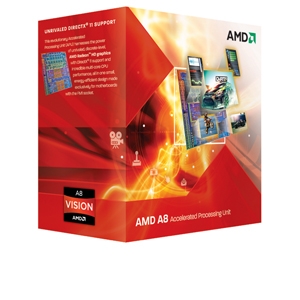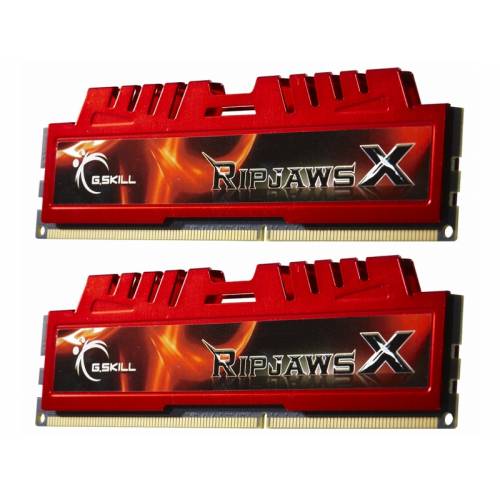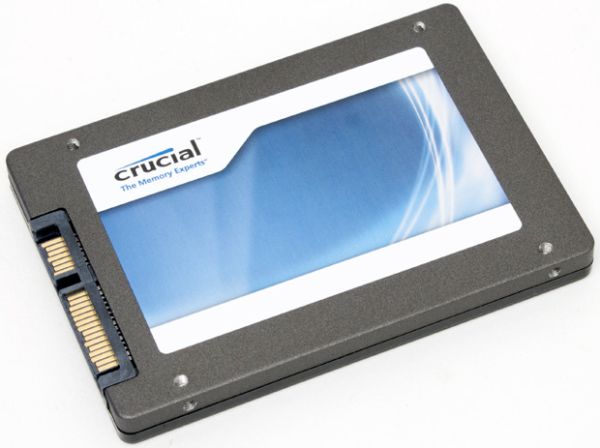Holiday 2011 Midrange System Buyer's Guide
by Zach Throckmorton on December 6, 2011 12:00 AM EST- Posted in
- Guides
- AMD
- Intel
- Sandy Bridge
- Llano
- Holiday 2011
- midrange
- NVIDIA
The AMD A8-3850 APU
Since its retail availability in July, AMD's Llano series of APUs (accelerated processing units) has offered vastly improved integrated graphics performance compared to previous chips from both AMD and Intel. The on-die graphics capability of the Llano chips is good enough to play even more demanding titles like Crysis acceptably, at least on medium resolutions and settings. The computing experience is also more than sufficient for generalized, day-to-day desktop computing.

Anand previewed and then fully reviewed the A8-3850 upon its release. You can get a great idea of what to expect, performance-wise, from his articles. The platform has matured since its launch, and prices on the supporting motherboards have fallen a bit over the last few months, making Llano an increasingly attractive choice for lower midrange gamers. As Anand's testing indicates, the A8-3850 is roughly equivalent to the Intel Core i3-2100—in general, the Intel chip takes the lead in single-threaded workloads while the AMD APU wins in multi-threaded scenarios. In order to get the Intel system up to par with the AMD rig in terms of graphics performance, you have to spend at least another $50 on a budget discrete GPU. For more casual gamers, that extra cost simply isn't necessary.
The parts
We've paired the A8-3850 with the fully-featured ASUS F1A75-M PRO/CSM motherboard. This is a well-designed board that features four rear USB 3.0 ports and two USB 2.0 ports, with headers for two more USB 3.0 ports and eight additional USB 2.0 ports. Other ports and interfaces include D-Sub, DVI, and HDMI video outs, an optical port, and GbE ethernet (among many other less important interfaces).
The build also features a Crucial M4 64GB SSD. AnandTech has long stressed how adding an SSD to a modern computer makes for a much improved, faster, and snappier all-around computing experience. Anand reviewed the M4 earlier this year. Since then, it has earned a reputation as a solid (though not stellar) performer, that is perhaps more importantly also very reliable. It has also become quite affordable. Though 64GB is plenty of space for the OS and many applications, it's insufficient for a large game and/or media library. Thus we've paired the speedy SSD with the venerable Samsung F3 1TB HDD. That said, because the anomalously high prices of mechanical hard drives puts this storage combination's total price at over $250, it's also worth considering ditching the mechanical drive altogether and going with only a higher capacity SSD like Intel's 320 Series 160GB SSD--you can always add a hard drive down the road when the prices come back down.

For the memory, we have an 8GB (2 x 4GB) kit of DDR3-1866. Anand's review of the A8-3850 showed that Llano benefits from higher bandwidth RAM, though this difference is not always that remarkable. You can save a few dollars by instead opting to go with a slower kit like this standard Kingston DDR3 1333 pair.
Rounding out the build, we once again turn to Antec's stalwart NEO ECO 400C power supply. I've put this PSU in many builds now and have yet to experience an issue with one. It is quiet, efficient, its cables are sleeved, 400W is more than enough power for any mainstream single GPU (or in this case, GPU-less) system, and it is not expensive at all.
All of the parts are housed in a Fractal Design Arc Midi, which Dustin reviewed recently. I really like this case and the customers for whom I've built systems with it rave about the Arc Midi. It has an integrated, ready-to-go (i.e. no aftermarket parts necessary) front USB 3.0 port, excellent thermals and acoustics, and while looks are subjective, I think it's very stylish.
| Component | Product | Price |
| Processor | AMD A8-3850 APU | $140 |
| Motherboard | ASUS F1A75-M PRO/CSM | $110 |
| RAM | G.SKILL Ripjaws X Series 8GB DDR3 1866 | $60 |
| SSD | Crucial M4 64GB | $110 |
| HDD | Samsung Spinpoint F3 1TB | $150 |
| Power supply | Antec NEO ECO 400C 400W | $35 |
| Case | Fractal Design Arc Midi | $100 |
| Optical drive | LITE-ON iHAS324-98B | $20 |
| Operating system | Windows 7 Home Premium 64-bit (OEM) | $100 |
| Total: | $805 |
Summary
This is a well-rounded system that is capable of casual to moderate gaming without the extra cost (and electricity) of a discrete video card. The quad-core A8-3850 and 8GB DDR3 facilitate great multitasking while maintaining good single-threaded performance. In addition to the reviews linked above, you can get a better picture of this APU's performance on AnandTech's Bench. The motherboard has room for a discrete GPU should you want to upgrade eventually, and has all of today's bells and whistles in terms of connectivity. The combination of the SSD and HDD offers the best of both worlds: SSD speed and HDD capacity. Finally, the case and PSU offer plenty of upgradeability for more storage (when HDD prices inevitably settle down in a few months) and thermals that will easily accomodate additional heat-generating internal components like a discrete GPU.
If you're looking for more computational and graphics power, check the next page for our $1000 Intel-based system.











57 Comments
View All Comments
cjs150 - Tuesday, December 6, 2011 - link
Got admit I like the 2500K system.Anyhow I like Micro-atx boards, I just cannot think what to include in a normal build which needs all the slots of a full ATX board.
If you want the dubious pleasures of SLI/Crossfire fine (but why not use a single card with dual GPUs).
Would be more happy when the old PCI slots are fazed out and only PCIe slots are in.
As a water cooling fanboy I am intending to use the Fractal cases for next build so I definitely approve
TerdFerguson - Wednesday, December 7, 2011 - link
Great comment. You're the guy I"d want building my machine. For that matter, you're the guy I'd want writing the articles. THanksslippyrocks - Tuesday, December 6, 2011 - link
llano cpu is equal to an ancient athlon ii x4llano cpu is smoked by the $70 sandy bridge pentium would that not make more sense on the low end
gfx w/ hdmi are included on-chip sandy bridge
or HD 6450 cost $40 right now for more fps
$20 ar corsair CX400v2 will power most any setup
go with the cheapest ssd c400 or vertex 3 they are both good and proven
cheaper mechanical drives can still be found on sale <$80 1TB
llano never made sense to me outside of laptops your are paying more for less
shivoa - Tuesday, December 6, 2011 - link
On the 2500K system you specified a 60GB SSD and back-up spinning drive (as games hit 20GB installs the advice to only put OS and apps on the SSD makes sense). Obviously these aren't being budgeted as totally gaming focussed boxes (maybe there is a case for waiting for a die shrink on buying a gaming box right now, unless the mainstream well priced cards take a while to release or hit these value prices for great performance) but I think no mention of SRT is amiss here.Unless there are details I haven't read about, then SRT seems like an ideal option for a light gaming rig with a 60GB SSD to provide those 50%+ faster load times in games that the Anand benchmarks indicated when looking at what a basic 40GB SSD could do with SRT. The OS and common apps should be picked up by the caching and so be close to SSD speeds for any large reads and as the i7 rig is the one designed for processing intensive tasks the low write speeds probably wouldn't be a major issue. My experience with SRT is rather positive for a gaming focussed machine.
Calin - Tuesday, December 6, 2011 - link
"You might also have noticed that we skipped out on keyboards,"I'm still using at home a AT keyboard (with adapter), so decent keyboards do indeed last a long time (and in many cases, old keyboards feel better than many new ones)
WiZARD7 - Tuesday, December 6, 2011 - link
There is no VGA in the 1200$ system?WiZARD7 - Tuesday, December 6, 2011 - link
I can't read, it writes:"You lose the ability to game as this PC has no discrete video card (and the integrated Intel graphics are not gaming-level). "
sorry.
Bty - Tuesday, December 6, 2011 - link
AMD's HD 7000 series should come out in the not-too-distant future, but we can't share any details on where those will rank right now.ARGHHHHHHHHHHHHH!!!!!!!!!
antef - Wednesday, December 7, 2011 - link
Yeah, does this mean they do know where they will rank but just can't share it yet?Mathieu Bourgie - Wednesday, December 7, 2011 - link
Well, AMD did announce that they would launch the 7xxx this year and with less than 3 weeks before Christmas, the launch could any day now.Usually, reviewers get several days, if not 1-2 weeks+ to test products, so Ryan could very well be testing some Radeon HD 7xxx cards as I write this ;)
Thing is, all reviewers who get products before launch have to sign a NDA (Non disclosure agreement), which prohibits them from talking about any specifics/performance regarding the product.
Assuming that he is, the question here is: Which 7xxx cards is it? The higher-end ones (a la 6950/6970), mainstreams ones (a la 6850/6870) or lower-end ones?
Only time will tell. Hopefully sooner than later :D